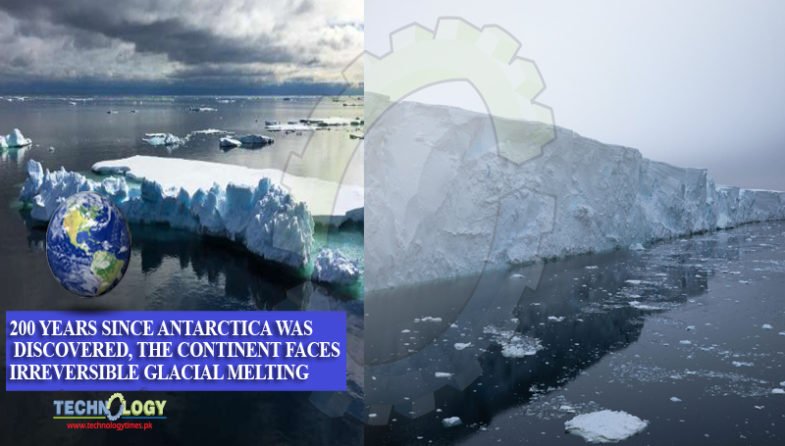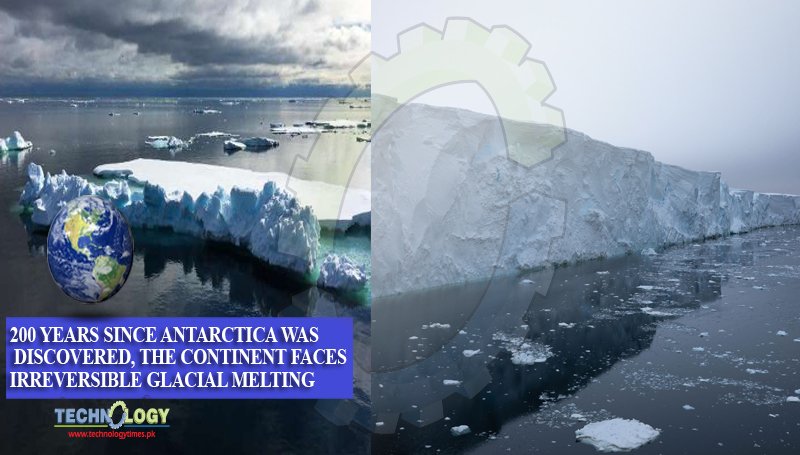On January 27, 1820, Fabian Gottlieb van Bellingshausen and his crew became the first known people to lay eyes on mainland Antarctica.

Today, on the 200th anniversary of its discovery, glaciologists say the continent is approaching a tipping point.
Pass it and nothing will prevent the glaciers from shrinking and the sea ice from melting—even if we cut out all greenhouse gas emissions overnight.
What we’re seeing now is “a trivial drop in the bucket,” Kurt Cuffey, a geography professor and the Martin Distinguished Chair of Ocean, Earth and Climate Science at the University of California Berkeley, told Newsweek.
Antarctica’s ice sheets account for the largest fraction of potential sea-level rise with the capacity to drown coastal cities if nothing is done to curb the global rise in temperature.
Andy Smith, science leader of the Ice Dynamics & Palaeoclimate Team at the British Antarctic Survey (BAS), says the threat Antarctica faces because of climate change is considerable.
“Increases in air temperature melt the ice on land,” he told Newsweek. “Warmer ocean waters increase melting where the ice meets the sea.”
If recent surveys are correct, the rate at which ice sheets are melting is accelerating significantly, and this dramatic change in pace has occurred in a relatively short period of time.
According to one study, Antarctica’s rate of annual ice loss rose six-fold between 1979 and 2017. That is a shift from 40 gigatons (yearly average between 1979 and 1990) to 252 gigatons (yearly average between 2009 and 2017).
In another study, Andrew Shepherd and his team discovered thinning of ice sheets of up to 122 meters in some places, with the most extreme and quick-paced changes taking place in West Antarctica.
Shepherd, a professor in earth observation at the U.K.’s University of Leeds, told Newsweek the speed at which the ice has thinned over the last five years has been surprising.
He warned that, if this current trend continues, the whole ice sheet could be unstable by the end of the century.
But the question of how far we can push Antarctica before it passes a point of no-return is up for debate. Some studies suggest parts of the continent may have already breached that barrier.
As Shepherd explained: “We’re already past some point of no return because we’re not going to cool it down again.”
The two glaciers that most concern glaciologists are the Thwaites Glacier and Pine Island Glacier near the Amundsen Sea in West Antarctica.
According to Cuffey, there are strong arguments that these systems have already retreated and thinned to the point that reinforcing feedback processes have been initiated.
Scientists, though, cannot say with certainty using current data that these systems have reached a tipping point of no return.
One of the greatest challenges researchers face in predicting when a tipping point will occur is ambiguities in climate models and the projections they generate.
To take one of the biggest uncertainties as an example, predictions of future global sea-level rise related to polar ice sheet melt have, so far, proven to be an underestimate.
Their contribution to sea-level rise is increasing faster than expected, said Smith.
“There is general agreement that once a particular tipping point in the ice sheet is passed, there are no possible mitigation measures that could then stop the ice sheet from retreating,” he said.
“But we could still retain the ability to affect the rate of that retreat, perhaps slowing it down and minimizing its effects for a long time.”
Should we worry about losing the Antarctic Ice Sheet altogether?
“Geological time shows us that ice ages have come and gone in the past, so it is reasonable to expect it could happen again in the future,” said Smith.
“From what we currently understand about the Antarctic Ice Sheet, removing it completely will take a very long time. Maybe millions of years, perhaps thousands of years at the absolute fastest.”
That is not to say we won’t notice an impact. Rising sea levels will be one of the most noticeable effects worldwide, say glaciologists.
Currently, levels are rising approximately 3.4 millimeters per year but it can take decades for the effects of warming to be fully realized. The environment we have today reflects climate changes that took place 50 to 100 years ago.
“What we are experiencing right now with our three to four millimeters of sea level rise is a reflection of the way the atmosphere was back around 1950,” said Cuffey.
University of Southern California scientists have released research showing rising sea levels may displace 13 million Americans by the end of the century. Southern Florida and parts of North Carolina and Virginia were among the worst-hit areas.
As for Antarctica, ice melt and glacial retreat may lead to a proliferation of invasive species, causing havoc to the existing ecosystem, while a surge of freshwater from the ice sheets into nearby oceans could disrupt marine environments.
“2100 is just the beginning if we don’t change the way energy is produced,” said Cuffey.
While the evidence can seem disheartening, there are measures we can take to slow down the process and reduce the likelihood of any worst-case outcomes.
“We know what is causing this,” Hilmar Gudmundsson, professor of glaciology and extreme environments at the University of Northumbria in the U.K., told Newsweek. “We know it’s the emission of greenhouse gases and the way to way to address this is by reducing our greenhouse gas emissions.”
How will we achieve this reduction? According to Shepherd: “The most important thing individuals can do is vote for somebody who says that they’ll do something at a national level. Because it requires national-level change.”
